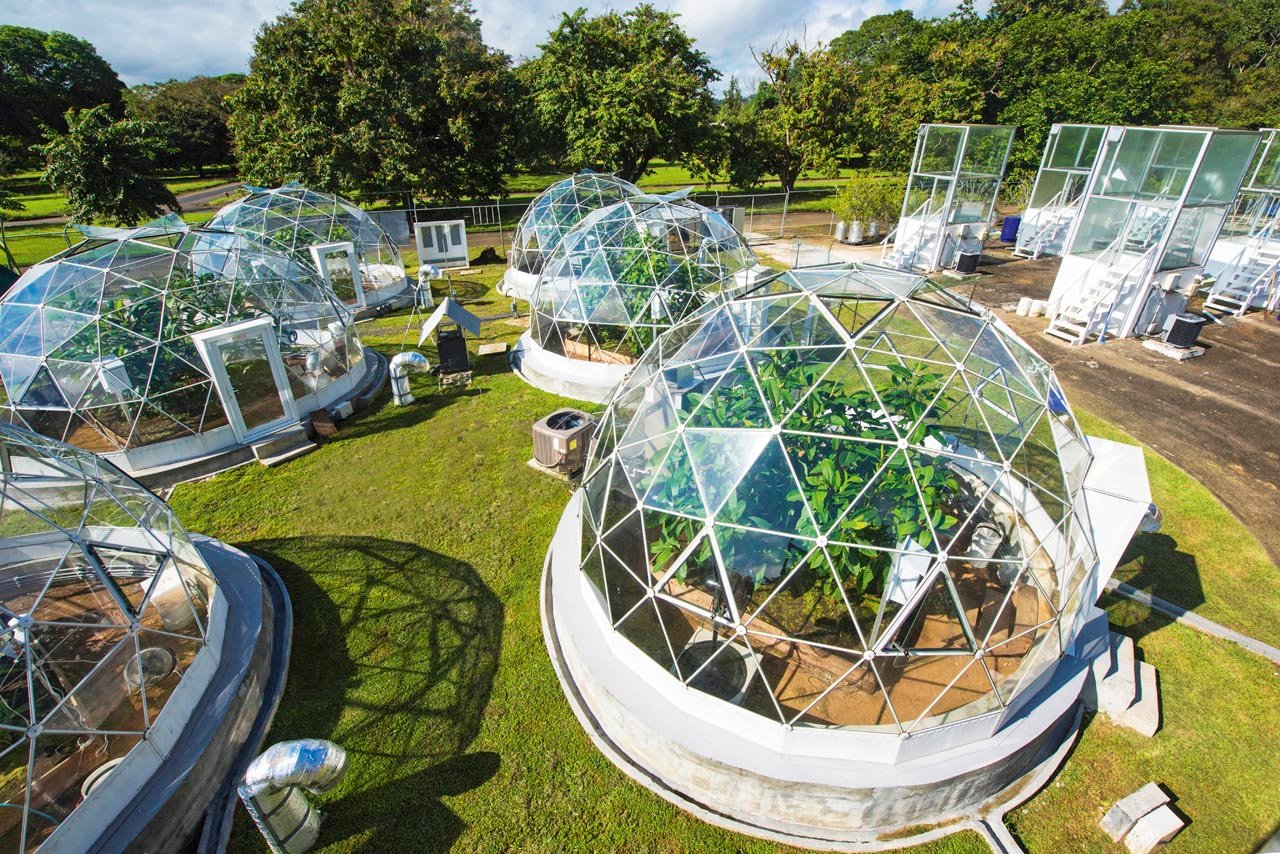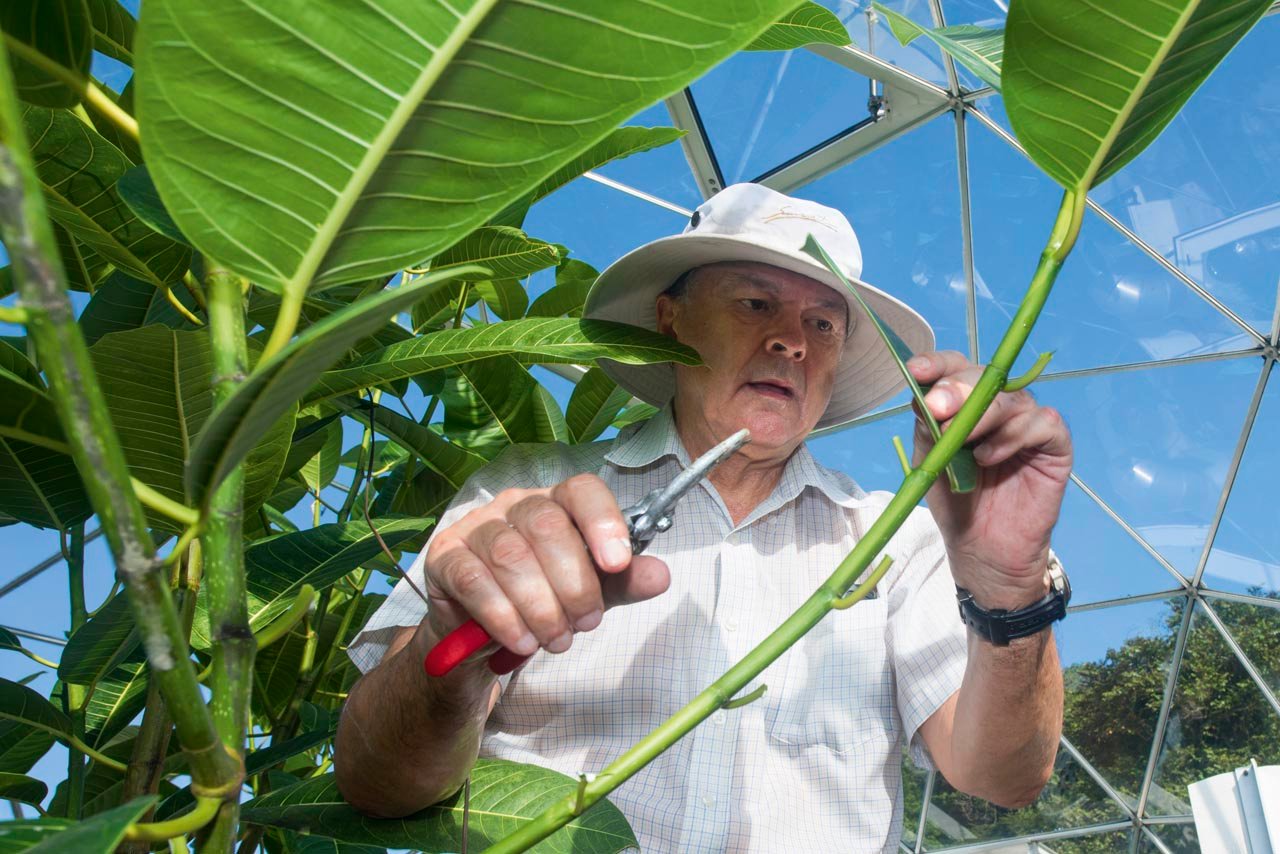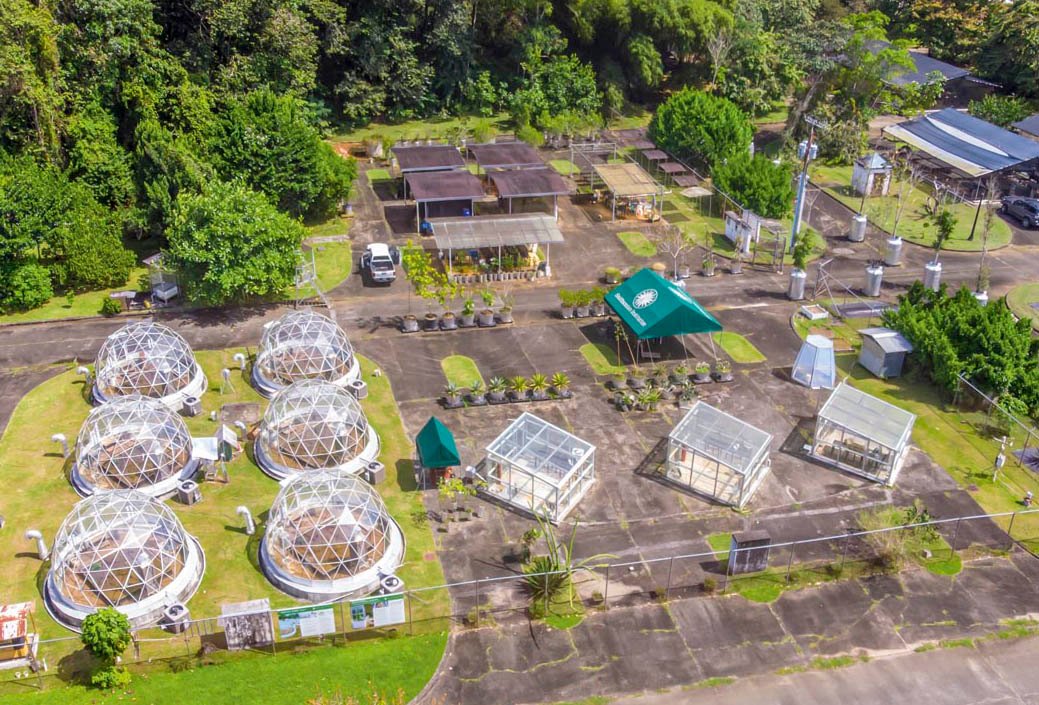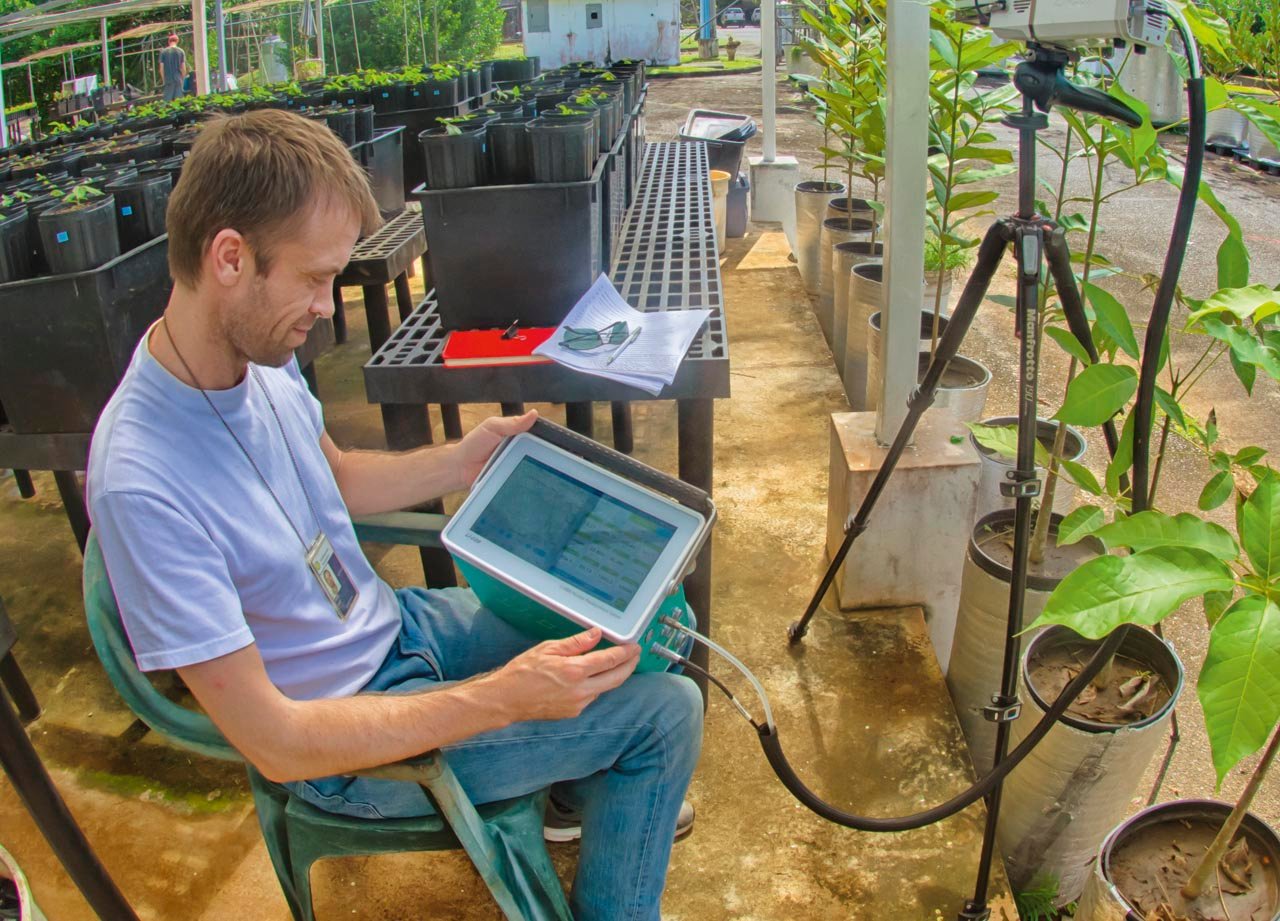
The Tropical Dome Project
Text and photos: Javier A. Pinzón
When faced with new or stressful situations, animals and humans can run away, protect themselves, or migrate. Plants cannot, yet they survive. How do they manage? How do plants interact with the environment and adapt to change?
While still a student, physiologist Klaus Winter discovered that some plant species have the ability to switch their transpiration mechanism between diurnal and nocturnal, depending on how much water is available. The plants cannot run away from the stress they face, but they are flexible enough to adapt.
The scientist has continued his work on this topic, devoting his career to studying the physiology of plants and their adaptability in the face of climate change. He feels that these replicated mesocosm experiments could have huge implications for our ability to predict whether climate change might reach a tipping point for tropical plants. They will help us understand how susceptible tropical plants are to climate change and environmental stress, thereby providing a basis for decision-makers to plan for the future.

This knowledge could be used, for example, to facilitate the production of enough food to sustain the planet’s growing population. Bioengineering could switch some species, such as rice, from a diurnal to a nocturnal plant in cases of drought to make it grow more efficiently.
How does this work?
To answer these questions, the scientist grows tropical trees, shrubs, vines, and herbs in geodesic domes located in the outdoor laboratories of the Smithsonian Tropical Research Institute in Gamboa, Panama.
The Tropical Dome Project has six climate-controlled geodesic domes that allow two variables (temperature and CO2 concentration) to be increased simultaneously to see if the tropical seeds and seedlings can adjust and acclimatize, and to determine just how extreme conditions must be to kill the plants. Scientists subject the plants inside the domes to high temperatures (up to some 11 degrees °F above normal) and concentrations of carbon dioxide 2.5 times higher than the planet’s current concentrations. They also modify the amount of water, oxygen, sunlight, shade, and nutrients in the soil.

The elevated concentrations of carbon dioxide are within the range of those predicted for the coming century if CO2 emissions continue to increase at the current rate. The results will tell Winter what we can expect in the tropics when these changes take place.
Why are they studying this?
CO2 concentrations have not been consistent across the history of our world. Geologist Carlos Jaramillo explains that some 58 million years ago, the concentration of CO2 was 800 ppm, but over the course of the last four hundred thousand years, CO2has gradually fluctuated between 200 and 280 ppm. Nonetheless, since the start of the industrial revolution in 1850, CO2 levels have increased by more than 40%, rising from a concentration of 280 ppm to 400 ppm. At this rate, we could reach 600 to 800 ppm by the end of this century. The most worrying feature of this data is the unprecedented rate of change. The question is whether we will manage to adapt to such rapid changes.

What has been discovered to date?
Experiments have shown that higher CO2 concentrations can speed up plant growth, but only when not constrained by inappropriate amounts of nutrients, water, and light. We also need to remember that the experiments are done in a controlled environment with no herbivores to feed on the plants, so the higher concentrations of CO2 forecast for the future will not necessarily mean more biomass in the forests.
Certain plant families, like legumes, respond well to increased CO2 levels even with few nutrients in the soil. These plants have a symbiotic relationship with certain root bacteria that can fix nitrogen from the atmosphere. Although air is about 79% nitrogen, this element is not accessible to plants; however, the bacteria can convert the air into ammonia, which will be absorbed by the roots, making the plant self-fertilizing. These species might benefit from increased CO2 in the atmosphere, which could change the composition of species in tropical forests.
What is next?
Follow-up studies will include experimental manipulations such as drought treatments, less extreme temperatures, and CO2 treatments. But the challenge is to carry out experiments like these on a larger scale, with giant domes that can enclose whole trees and even forests, which would give us an idea of how tropical forests as a whole —adult trees as part of a community rather than just seeds and seedlings— will respond to climate change. Dr. Klaus notes that this is expensive, but still costs less than studying other planets.
The Tropical Dome project will provide many answers about the effects of climate change on tropical plants. The project considers not just the number of species, but their function and purpose.